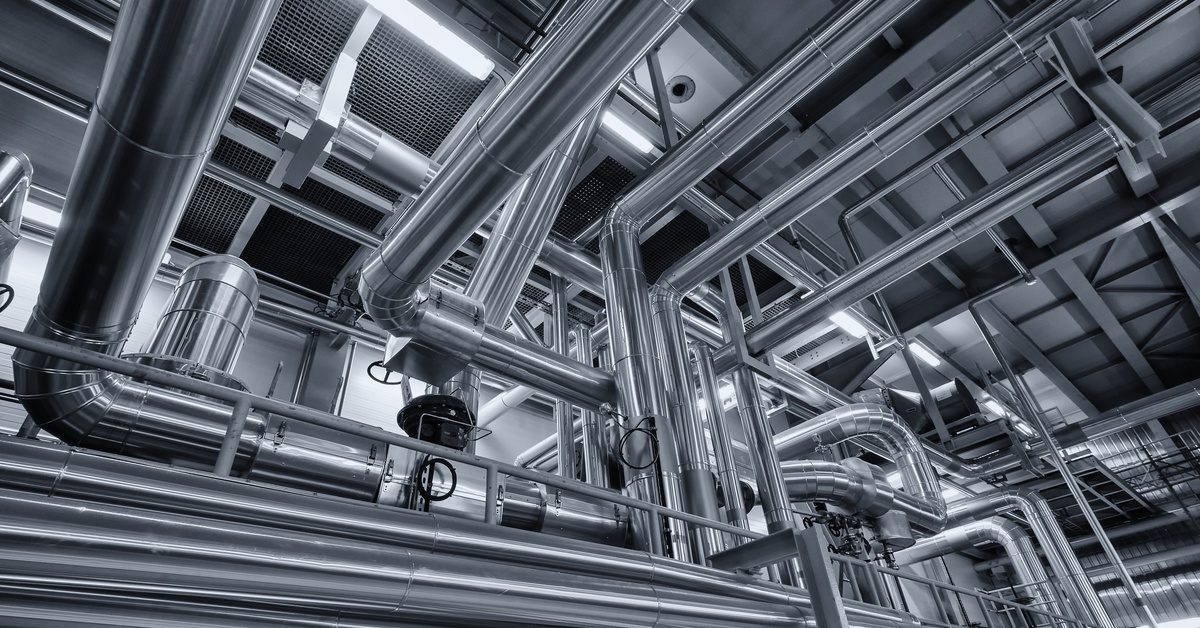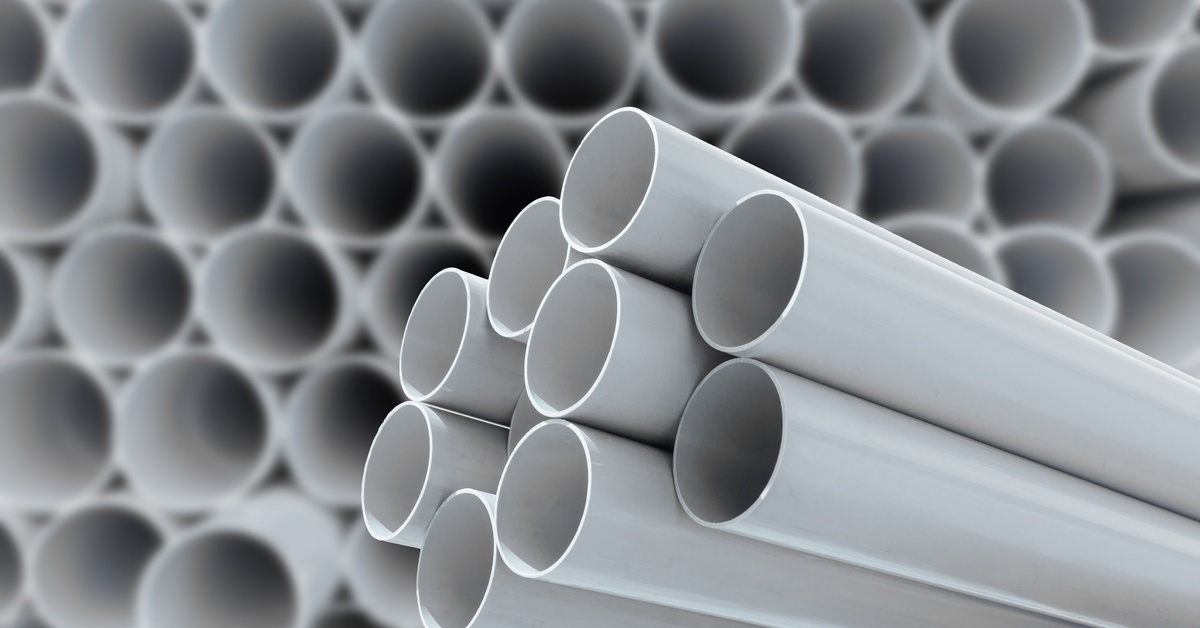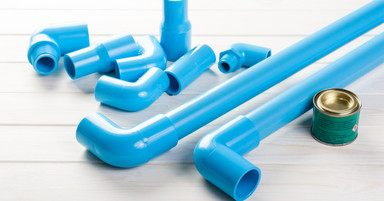14th Mar 2025
PVC vs. Stainless Steel Pipe & Fittings: The Difference
When it comes to selecting pipes and fittings for your projects, the choice frequently boils down to PVC versus stainless steel. These two materials dominate the plumbing and construction industries for good reason.
Each offers unique benefits and drawbacks, making the decision highly dependent on the specific needs of your job. Today, we will explore the differences between PVC and stainless steel pipes and fittings. Find out how you can maximize the potential of either material on your next jobsite.
Understanding the Material Composition
PVC, or polyvinyl chloride, is a type of plastic known for its versatility, durability, and affordability. It is primarily composed of carbon, hydrogen, and chlorine, which makes it highly resistant to chemical corrosion and lightweight. PVC pipes and fittings are widely used in various applications due to their ease of manufacturing and installation.
Stainless steel, on the other hand, is an alloy mainly consisting of iron, chromium, and nickel. Its defining feature is its ability to resist rust and corrosion, thanks to the chromium content which forms a protective oxide layer. Stainless steel pipes and fittings are synonymous with strength and reliability, especially in demanding environments.
Understanding these compositions is crucial, as the material determines how the pipe and fittings perform under pressure, exposure to chemicals, and environmental conditions.
Durability and Longevity in Focus
Durability is one of the biggest factors to consider when choosing between PVC and stainless steel. PVC pipes are highly resilient in many situations, especially for applications that don't require exposure to extreme temperatures or significant pressure. However, under prolonged sunlight and extreme heat, PVC can degrade, potentially impacting its performance over time.
Stainless steel excels in environments where strength is non-negotiable. With impressive resistance to high temperatures, heavy loads, and harsh chemicals, stainless steel pipes can easily endure decades of use. This makes them ideal for industrial and commercial applications, where longevity and minimal maintenance are critical.
While both materials are long-lasting, the specific conditions of the job—such as temperature fluctuations, exposure to corrosive substances, and physical stress—will determine which is the better fit.

Comparing Costs
When it comes to cost, PVC emerges as the budget-friendly option. Because it contains relatively inexpensive materials and is lightweight, PVC not only costs less upfront but also saves on transportation and labor expenses. This makes it a go-to choice for residential and commercial projects, where managing costs is a priority.
Stainless steel, by comparison, is more expensive. Its durability, aesthetic appeal, and versatility come at a premium, typically making it less suitable for cost-sensitive projects. However, the higher upfront investment is offset by its longer lifespan and lower maintenance requirements under the right conditions. This helps justify the cost for industrial settings or applications requiring structural integrity over time.
Still, budget constraints should be carefully balanced with the demands of the project to ensure you always choose the right material from the start.
The Installation Process
When comparing PVC vs. stainless steel pipes and fittings, the differences extend to the installation process. PVC's lightweight nature makes it incredibly easy to handle. It can be cut and joined on-site using simple tools and adhesive methods, significantly speeding up the installation process. This ease of use is one of the reasons PVC is so popular in do-it-yourself plumbing and irrigation jobs.
Stainless steel, in contrast, is more labor-intensive to install. The cutting and welding of stainless steel require specialized tools and professional expertise, which can add to the time and labor costs. However, it offers greater reliability in high-stress applications, where secure joints are critical.
Understanding the installation process for each material can help you anticipate project timelines and labor requirements, ensuring your team is adequately prepared.
Best Use Cases and Applications
As you decide between PVC and stainless steel, considering the intended application is pivotal.
PVC excels in residential plumbing, irrigation systems, and wastewater management. Its lightweight and corrosion-resistant properties make it ideal for handling water and non-hazardous chemicals.
Stainless steel, in contrast, shines in industrial and commercial applications. It is commonly used in water treatment plants, chemical processing facilities, and high-pressure environments where strength and durability are paramount. The aesthetic appeal of stainless steel also makes it a popular choice for exposed pipework in modern architectural designs.
Choosing the right material ultimately depends on matching your project's environment and performance needs with the capabilities of each material.

Final Decisions
Stainless steel pipes are popular for their durability and resistance to corrosion, making them a long-lasting solution for both industrial and residential applications. They can withstand high pressure and extreme temperatures, which is ideal for demanding environments such as chemical plants or high-rise buildings. Additionally, stainless steel is a sustainable material, as it is fully recyclable and reduces waste over time.
PVC pipes stand out for their affordability and ease of installation. Being lightweight, they significantly reduce labor costs and are easy to handle, facilitating faster project completion. PVC is resistant to chemical corrosion, making it a practical option for certain plumbing, irrigation, and drainage applications. Furthermore, PVC pipes require minimal maintenance and are highly adaptable to different configurations, offering a flexible and cost-effective solution for projects with specific budget constraints. At Maxx Supply, you can find a PVC pipe supplier offering both pipes and fittings in many designs, making it easy to suit your given configuration. Balancing these benefits with your project requirements will help ensure an efficient and effective outcome.
Finding the Right Balance
The debate between PVC and stainless steel pipes and fittings ultimately boils down to the specific needs of your project. PVC is the cost-effective, lightweight solution for applications with minimal exposure to extreme conditions. Stainless steel, however, is the dependable, long-lasting choice for demanding environments where strength, durability, and sustainability are key.
Invest some time in carefully assessing your project's requirements—whether that’s budget constraints, environmental factors, or structural demands. If you’re still unsure, consult with industry professionals who can guide you toward the best material for your unique circumstances.
Whether you opt for PVC or stainless steel, choosing the right material is a step toward efficient, effective, and reliable installations that stand the test of time. Choosing the right materials can result in plumbing system failures. Thankfully, you can prevent that from happening right now. Use the information above to build plumbing systems you can rely on for daily use.

